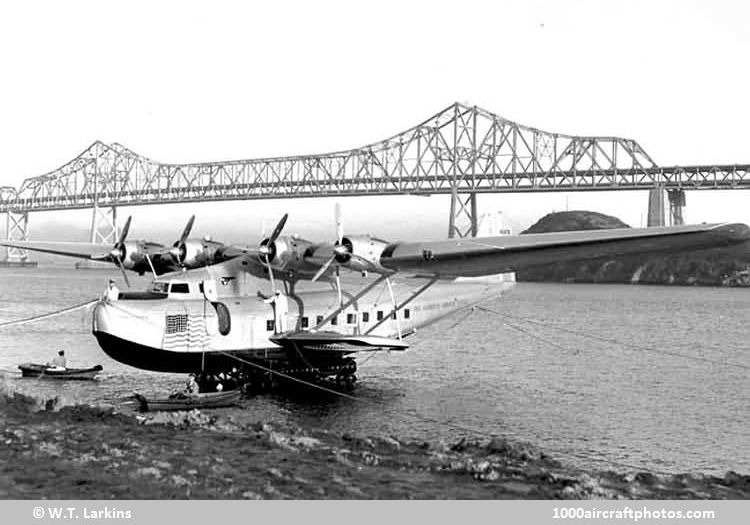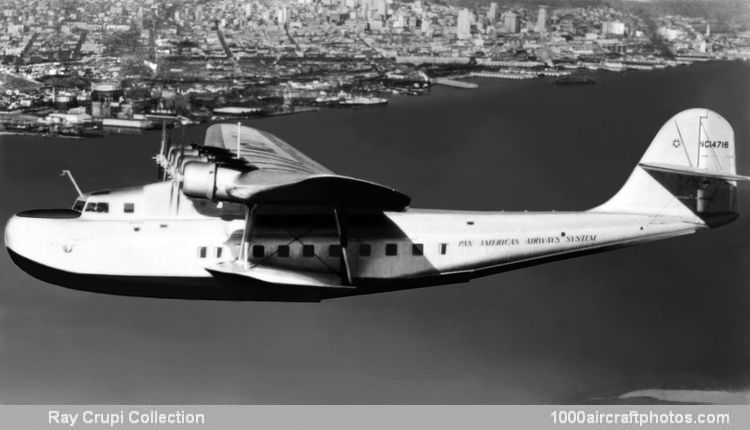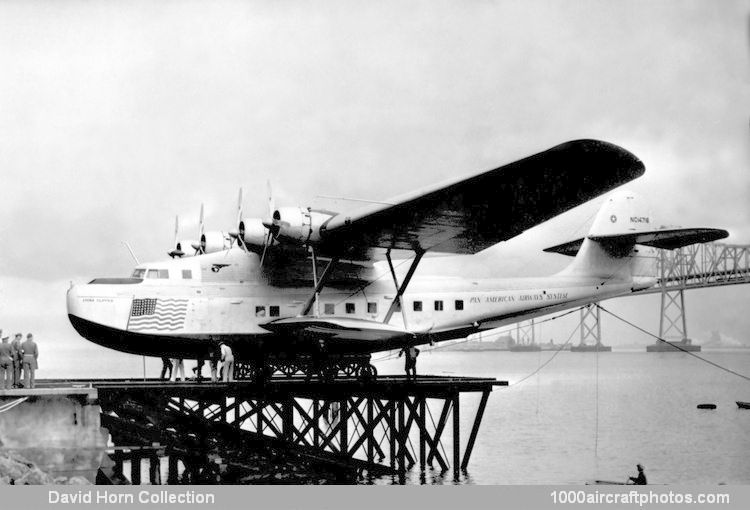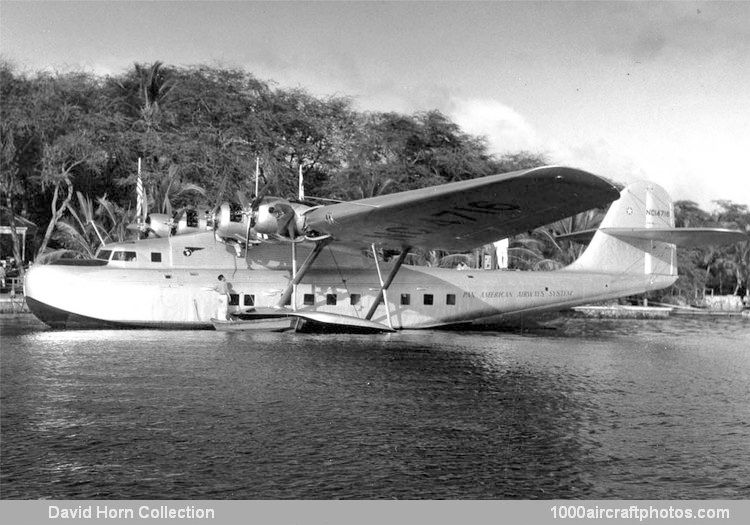W.T. LARKINS MEMORIAL COLLECTION
No. 3155. Martin 130 (NC14716 c/n 558) Pan American Airways "China Clipper"
Photographed at Treasure Island, San Francisco, California, USA, 1939, by W.T. Larkins
08/31/2006. Remarks by
Jack McKillop: "This aircraft, one of three Model 130s built, was delivered to Pan American Airways on October 9, 1935. The other two were NC14714 c/n 556 'Hawaii Clipper' and
NC14715.
(
Ray Crupi Collection)
On November 22, 1935, this aircraft took off from Alameda, California, en route to Manila, Philippine Islands, via Honolulu, Hawaii; Midway Island; Wake Island; and Guam. This was the first trans-Pacific airmail service. About 125,000 people witnessed the take off from Alameda. The clipper arrived in Manila on November 29, carrying 110,000 letters and arrived back in Alameda on December 6, carrying 98,000 letters.
In 1942, the US Navy impressed the two remaining 130s for overseas air transport and assigned it BuNo. 48231 but a unique Naval designation was never assigned. The aircraft was manned by Pan American personnel and was assigned to the South Atlantic service between Miami, Florida, USA, and Leopoldville, Belgian Congo; uranium ore for the Manhattan Project was one of the clipper's most important 'passengers'.
On January 8, 1945, this aircraft departed Dinner Key, Miami, Florida, at 06:08 hours for a flight to Leopoldville, Belgian Congo; this was designated Flight 161. The flying boat landed at San Juan Harbor, Puerto Rico, at approximately 14:23 hours. After refueling Flight 161 took off from San Juan at 16:05 hours on a contact flight clearance for Port of Spain, Trinidad. Crossing the north coast of Trinidad at an altitude of 4,000 feet (1,219 meters), a gradual let-down was started. Wind was calm, and lights to mark the landing area on the surface of the water were laid out on a 70° course.
The approach was flown by a captain acting as first officer in the left hand seat. During the first approach he came in too high so he was forced to circle the landing area. During the second try, the Martin descended too low and contacted the water at more than normal landing speed and in a nose-low attitude at a point 1.25 miles (2.0 km) short of the intended landing area. As the plane came to an abrupt stop in the water, the hull broke in two at a point about 3 feet (0.91 m) aft of the hull step and the rear part of the hull was forced up and forward. Water poured into the cabin and major portion of the flying boat sank immediately. The plane sank at 21:16 hours and 23 of the 30 people aboard were killed.
This was the last of the Model 130s. The first one, the 'Hawaiian Clipper' had disappeared while flying from Guam to Manila on July 28, 1938 and the second one, 'Philippine Clipper,' had crashed into a mountain at Boonville, California, about 100 miles (161 km) north of San Francisco, California, on January 21, 1943."
01/04/2004. Remarks by
Jacques Trempe, from an interent source: "Built by the Glenn L. Martin Company, they were known by the company as Martin Ocean Transports. The aircraft first flew on December 30, 1934. Only three of these aircraft were built, the China Clipper, the Philippine Clipper and the Hawaii Clipper. To the public, China Clipper became a generic name and originally was applied to all three of the Martin 130s in Pan American's fleet and, later, even to the Boeing 314s."




